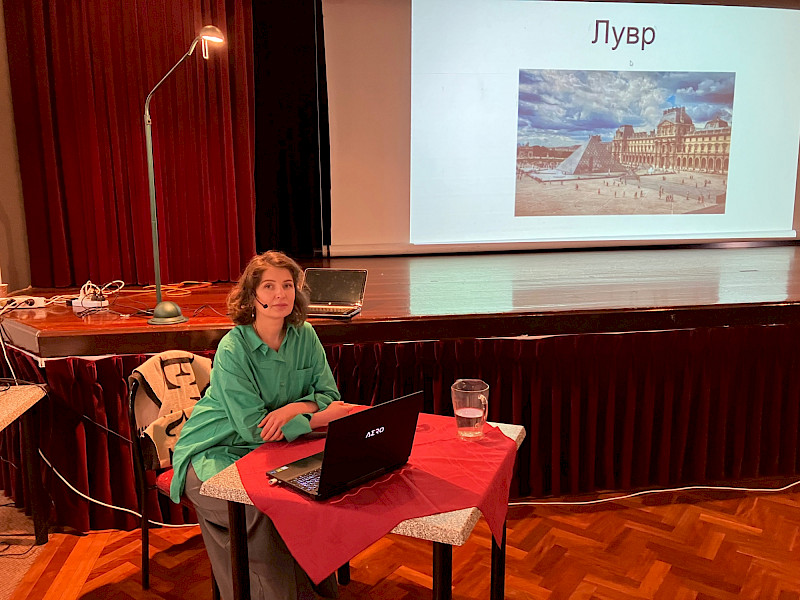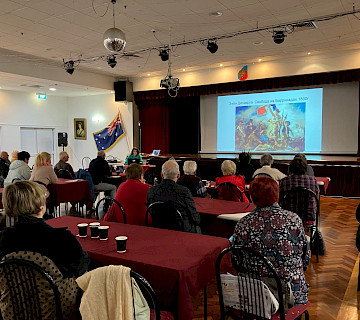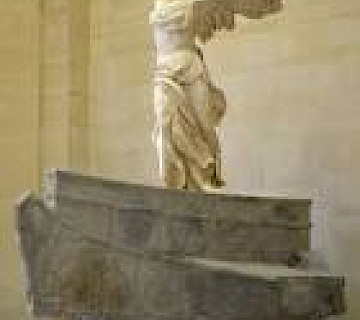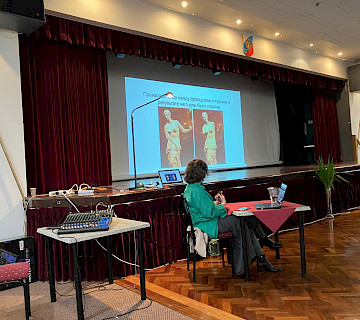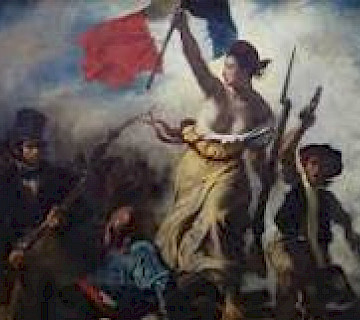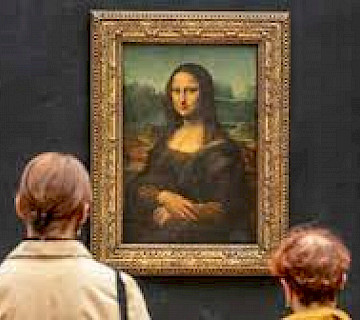Art Lecture: Louvre Museum
An art lecture about the Louvre Museum, one of the most famous museums in the world, was held by the artist Ksenia Kirkbride on 6th of August 2023.
About 40 people came to listen to the art lecture about the Louvre. We learned about the history of the Louvre building, which began its life as a fortress in the Middle Ages and then turned into a beautiful palace. We learned about its architectural features and significance in the history of France. The history of the creation of the Louvre began in the 12th century: King Philip-Augustus had to protect his native city from possible invasions of enemies. The wall began to be built in 1190, and the work was completed only in 1210. One of the tall towers was called the Louvre. There was a meadow near it, next to which the royal castle was later built. A large fortress wall passed through the courtyard of today's Louvre. The impregnability of the fortress did not raise doubts among the then population. In the center of it was a donjon (the highest tower). Near it were built 10 towers more. The thickness of the walls, as well as the machines located on them, served as insurance for the construction. A deep ditch with counterscarps was dug around. The Louvre served as a territory for palace executions, a prison, an arsenal.
Francis I was the first of all kings to make the Louvre his main Parisian residence only in 1546. He decided to demolish the keep and build a castle in a modern style for that era. Work continued after his death during the reign of Henry II.
Henry IV immediately after his coronation in 1589 decided to develop the "Great Project". His plans included the complete demolition of the fortress built in the Middle Ages and the combination of two palaces: the Louvre and the Tuileries. Which was done during the construction of the Grand Gallery between them. Its lower floor was reserved for shops and workshops, and a printing house and a mint were located above.
In the 17th century, a gallery began to exist in the Louvre, in which craftsmen who were not on the staff of professional workshops could work. In 1608, various artisans began to work there, for example, manufacturers of edged weapons, perfumes, textile products, and various tools. They could not work in the shops, but live completely under the auspices of the king himself.
Louis XIV de Bourbon, who received the name Louis-Dieudonnet "God-given" at birth, was the king of France and Navarre from May 14, 1643. He reigned for 72 years. Under this ruler, the Louvre began to be rebuilt, since Louis XIV paid great attention to architecture, considering it the most significant manifestation of the power of the king. The old buildings were demolished.
Today, the Louvre Palace is the greatest ancient monument of architecture and the custodian of the sights of various eras.
The facade of the royal palace overlooking the Louvre Square is the colonnade of the Louvre. The length is 170 m. It was built by the famous Claude Perrault, who really was the brother of the famous storyteller. The colonnade is considered one of the most famous buildings from the time of classicism.
The lecturer told us about the rich history of the Louvre collection, which began to take shape in the 13th century and began with the Egyptian collection. It was as if we walked through the halls of the museum and got acquainted with some of the most famous masterpieces presented there. Each of those present learned something new about the Louvre and its collections and got acquainted with their amazing stories. These are stories about Venus de Milo, Nike of Samothrace, Fayum portraits and other exhibits of the museum. We learned about the famous Egyptian collection of the Louvre, about the works of some great artists: Eugene Delacroix "Liberty on the Barricades" (1830), Jacques Louis David, "Madame Recamier," Théodore Géricault, "The Raft of the Medusa" (1818), Jean Auguste Ingres, " The Bather of Valpinson" (1808) and "The Great Odalisque" (1814), Leonardo Da Vinci, "Mona Lisa" (1503), Hieronymus Bosch, "Ship of Fools" (1510), Jan Van Eyck, "Madonna of Chancellor Nicolas Rolen" (1435) and others.
We learned about the sfumato technique invented by Leonardo da Vinci. This is how he described it: "Finally, so that your shadows and lights are united, without a line or edge like smoke." And about the spolvero technique. Spolvero is a technique originating in Italy in which the outline of a drawing is transferred to a canvas, wall or other surface using a linen bag filled with dark powder (such as charcoal), which is applied to a perforated sketch on paper or parchment pressed to the surface. The powder penetrates through the holes punctured on the paper, leaving the contours of the pattern in the form of lines formed by small dots. Studies have shown that da Vinci used the spolvero to create the Mona Lisa and his other famous paintings, such as "Lady with an Ermine", "Portrait of Ginevra de Benci" and "La Belle Ferroniera".
In addition, we watched a funny video about morals in the palaces of Versailles during the reign of King Louis the 14th, during which the Palace of Versailles was built. Of course, it is impossible to tell everything about such a huge museum as the Louvre in one lecture. But we got acquainted with the history of its creation, with the works of the great masters of painting and sculpture, related to the masterpieces of world culture, which means we touched the beauty, which undoubtedly makes our life more interesting.
Based on the materials of the lecture and video materials of Xenia Kirkbride and Ireland to the source of information.
Alla Khlebakova

